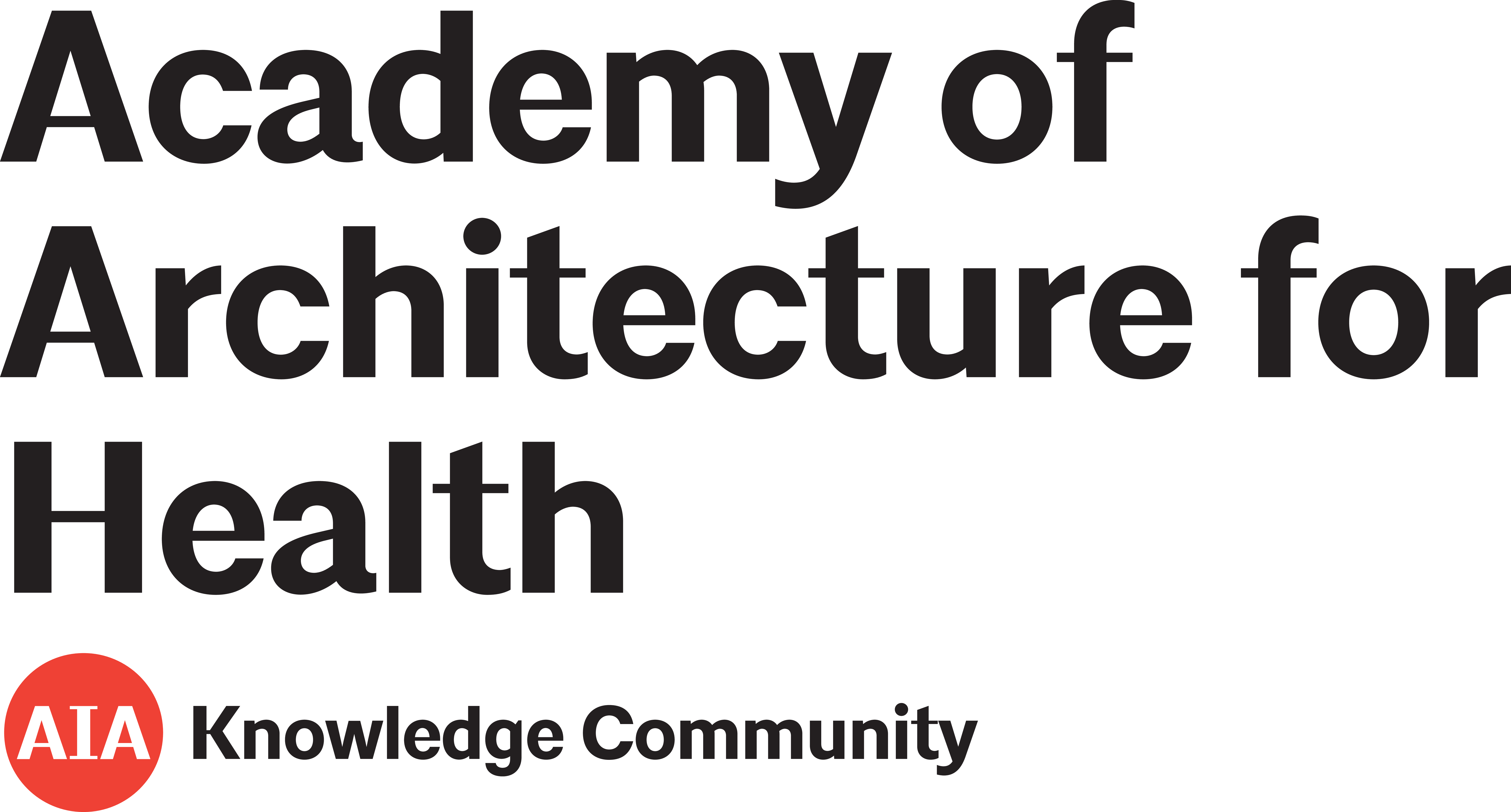Ergonomics in Healthcare Facility Design, Part 2: Support Areas
2011
Journal of Nursing Administration
Journal Article
Issue 3
Volume 41
Pages 97-99
Author(s): Feiler, J. L., Stichler, J. F.
Added December 2015
Antimicrobial surfaces to prevent healthcare-associated infections: a systematic review
2015
Journal of Hospital Infection
Journal Article
Issue 1
Volume 92
Pages 7-13
Author(s): Muller, M. P., MacDougall, C., Lim, M., Armstrong, I., Bialachowski, A., Callery, S., Ciccotelli, W., Cividino, M., Dennis, J., Hota, S., Garber, G., Johnstone, J., Katz, K., McGeer, A., Nankoosingh, V., Richard, C., Vearncombe, M.
Added November 2015
Assessing the quality of environmental design of nursing homes for people with dementia: Development of a new tool: The Environmental Audit Tool-High Care
2015
Australasian Journal on Ageing
Journal Article
Issue 3
Volume 34
Pages 191-194
Author(s): Fleming, R., Bennett, K.
An existing Environmental Audit Tool (EAT) was modified with items that address the environmental needs of people in the final stages of dementia. The 56 items that were added to the EAT tool were developed from the Dementia Collaborative Research Center.
Added November 2015
The Green House Model of Nursing Home Care in Design and Implementation
2015
Health Services Research
Journal Article
Issue S1
Volume 51
Pages 352-377
Author(s): Cohen, L. W., Zimmerman, S., Reed, D., Brown, P., Bowers, B. J., Nolet, K., Hudak, S., Horn, S., the THRIVE Research Collaborative
The Green House (GH) model of nursing home (NH) care is a trademarked model created in 2012 that seeks to undo the social stigmas and inefficiencies commonly associated with NHs. GH homes are marked by smaller-sized homes (10-12 residents) located in community neighborhoods, personalized care procedures that are tailored to individual patient needs, and 24-hour nurse availability.
Added November 2015
Artifacts and collaborative work in healthcare: methodological, theoretical, and technological implications of the tangible
2005
Human-Centered Computing in Health Information Systems. Part 1: Analysis and Design
Journal Article
Issue 1
Volume 38
Pages 26-33
Author(s): Xiao, Y.
Added November 2015
Higher Quality of Care and Patient Safety Associated With Better NICU Work Environments
2016
Journal of Nursing Care Quality
Journal Article
Issue 1
Volume 31
Pages 24-32
Author(s): Lake, E. T., Hallowell, S. G., Kutney-Lee, A., Hatfield, L. A., Del Guidice, M., Boxer, B. A., Ellis, L. N., Verica, L., Aiken, L. H.
Infants undergoing treatment in neonatal intensive care units or NICUs are among those patients who are most susceptible to negative outcomes pertaining to quality and safety. The authors note that the central catheters, which are so crucial to a neonate, are often the source for nosocomial infections.
Added November 2015
Shared decision making in designing new healthcare environments—time to begin improving quality
2015
BMC Health Services Research
Journal Article
Issue 1
Volume 15
Pages 1-7
Author(s): Elf, M., Fröst, P., Lindahl, G., Wijk, H.
Added November 2015
Improving operating theatre design using facilities layout planning
Author(s): Assem, M., Ouda, B. K., Wahed, M. A.
Added November 2015
Health Care Logistics and Space: Accounting for the Physical Build Environment
Author(s): Boucherie, R. J., Hans, E. W., Hartmann, T.
Added November 2015
A fast genetic algorithm for solving architectural design optimization problems
2015
AI EDAM
Journal Article
Issue Special Issue 04
Volume 29
Pages 457–469
Author(s): Su, Z., Yan, W.
Added November 2015
A hierarchical facility layout planning approach for large and complex hospitals
2015
Flexible Services and Manufacturing Journal
Journal Article
Volume First Online
Pages 1-25
Author(s): Helber, S., Böhme, D., Oucherif, F., Lagershausen, S., Kasper, S.
Added November 2015
Parametric Optimization of Hospital Design
Author(s): Holst, M. K., Kirkegaard, P. H., Christoffersen, L. D.
Added November 2015
Using Building Information Modelling (BIM) to Design Flexible Spaces with Design Standards in Healthcare Facilities
2014
Journal of Civil Engineering and Architecture Research
Journal Article
Issue 5
Volume 1
Pages 312–326
Author(s): Ahmad, A. M., Krystallis, I., Demian, P., Price, A.
Added November 2015
A study protocol for performance evaluation of a new academic intensive care unit facility: impact on patient care
2013
BMJ Open
Journal Article
Issue 7
Volume 3
Pages e003134
Author(s): Ferri, M., Zygun, D. A., Harrison, A., Stelfox, H. T.
Added November 2015
Copper surfaces are associated with significantly lower concentrations of bacteria on selected surfaces within a pediatric intensive care unit
2016
American Journal of Infection Control
Journal Article
Author(s): Schmidt, M. G., von Dessauer, B., Benavente, C., Benadof, D., Cifuentes, P., Elgueta, A., Duran, C., Navarrete, M. S.
Hospital-acquired infections (HAIs) plague hospitals around the world. The authors note that patients in ICUs, particularly those in pediatric and neonatal ICUs, are more susceptible to contract an infection from the clinical environment because of factors like the patient’s illness and the use of invasive medical devices, etc.
Added November 2015
Physical Design Correlates of Efficiency and Safety in Emergency Departments: A Qualitative Examination
2014
Critical Care Nursing Quarterly
Journal Article
Issue 3
Volume 37
Pages 299-316
Author(s): Pati, D., Harvey, T. E., Pati, S.
The objective of this study was to explore and identify physical design correlates of safety and efficiency in emergency department (ED) operations. This study adopted an exploratory, multimeasure approach to (1) examine the interactions between ED operations and physical design at 4 sites and (2) identify domains of physical design decision-making that potentially influence efficiency and safety. Multidisciplinary gaming and semistructured interviews were conducted with stakeholders at each site.
Added November 2015
PHAMA - Patient Handling and Movement Assessments: A White Paper
Author(s): ,
Added November 2015
Network of Spaces and Interaction-Related Behaviors in Adult Intensive Care Units
2014
Behavioral Sciences
Journal Article
Issue 4
Volume 4
Pages 487-510
Author(s): Rashid, M., Boyle, D. K., Crosser, M.
Using three spatial network measures of “space syntax”, this correlational study describes four interaction-related behaviors among three groups of users in relation to visibility and accessibility of spaces in four adult intensive care units (ICUs) of different size, geometry, and specialty. Systematic field observations of interaction-related behaviors show significant differences in spatial distribution of interaction-related behaviors in the ICUs.
Added November 2015
Evaluation of factors and approaches affecting emergency department space planning
2014
Facilities
Journal Article
Issue 13/14
Volume 32
Pages 761-785
Author(s): Pascale, F., Achour, N., Price, A. D. F., Polverino, F.
Increasing demand for care in emergency departments (EDs) is a widespread issue that has provoked the development of different processes to help reduce the struggles faced by healthcare providers. By investigating the different methods healthcare designers have implemented to reduce the costs and complications associated with ED overcrowding and inefficiency, more resilient designs may be realized in the future.
Added November 2015
Barriers to Infection Control due to Hospital Patient Room Factors A Secondary Analysis of Focus Group and Interview Transcripts
2014
Proceedings of the Human Factors and Ergonomics Society Annual Meeting
Journal Article
Issue 1
Volume 58
Pages 1266-1270
Author(s): Patterson, E. S., Murray, J., Park, S., Sanders, E. B.-N., Li, J., Umar, R., Sommerich, C. M., Evans, K. D., Lavender, S. A.
Added November 2015




